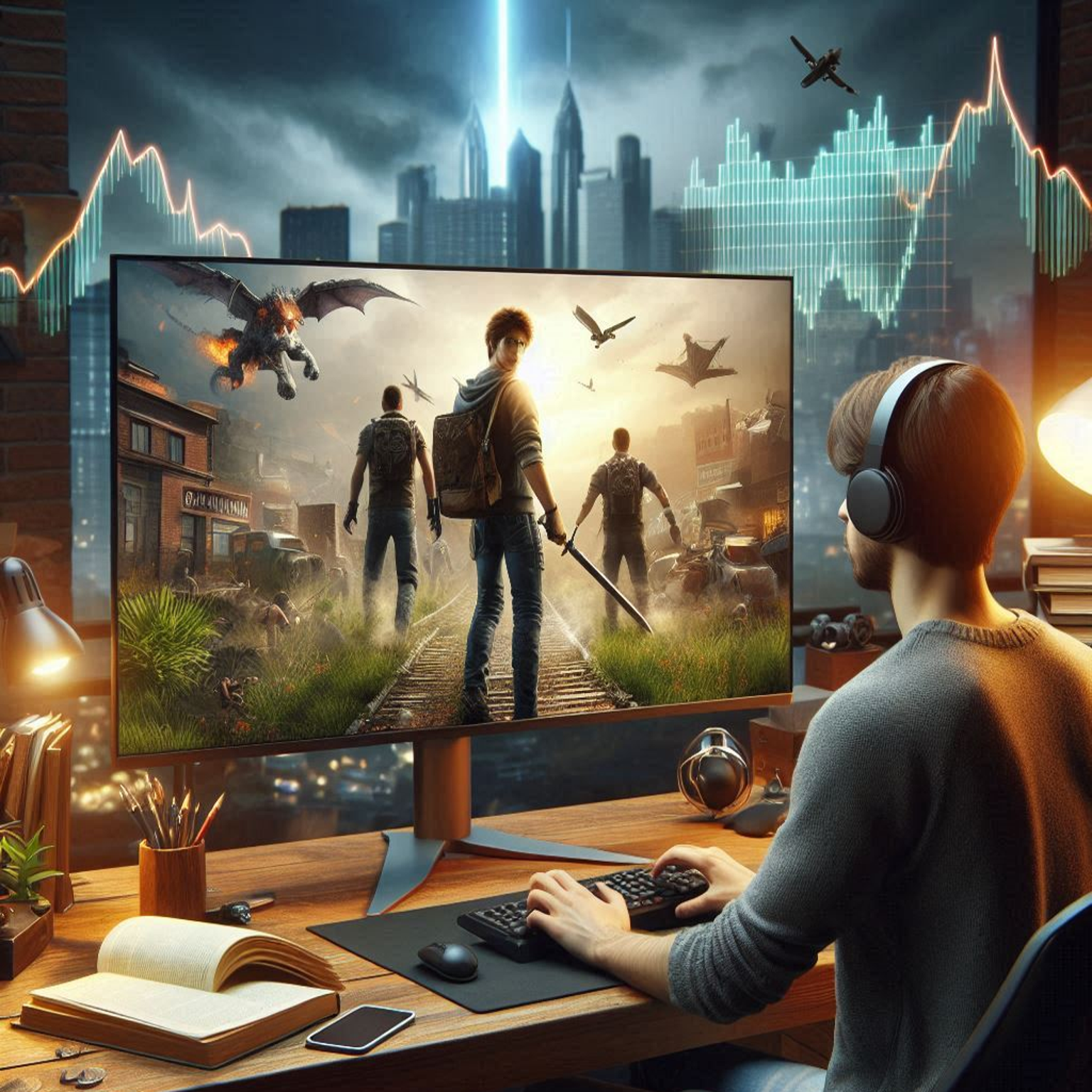Open-world games are really fun because they let players explore huge worlds and do whatever they want. But have you ever wondered how these games became possible? There are some important technology changes that helped make open-world games what they are today. Let’s look at a few of these changes and some terms that will help us understand them better.
One of the main advancements is **game engines**. A game engine is like a big toolbox that helps game designers create games more easily. With better game engines, they can build bigger worlds with more details. Another important term is **AI**, which stands for artificial intelligence. AI in games makes characters behave smartly. This means non-playable characters (NPCs) can talk, fight, or even work with you in the game.
Then there’s **graphics** technology, which improves how games look. The more advanced the graphics, the more real the game world seems! Along with graphics, there’s also **physics engines** that make sure things move in a lifelike way, like when a car crashes or a character jumps.
Let’s not forget about **multiplayer** technology, which lets many players join the same world. This way, you can team up with friends or compete against others. Lastly, the **internet** has made it so that players can download updates and new content, making their game experience fresh.
In summary, game engines, AI, graphics, physics engines, multiplayer tech, and the internet are major advancements that helped open-world games expand and become amazing. Now you can explore big worlds, meet cool characters, and have fun adventures all thanks to these technologies!
The Revolutionary Changes in Gaming Technology
Open-world games have transformed the landscape of video gaming, allowing players to explore vast, immersive worlds filled with diverse missions and activities. This transformation was made possible through several key technological advancements. Below, we will explore these advancements, the challenges they addressed, and the solutions that emerged as a result.
Key Technologies in Open-World Game Development
To understand how open-world games were created, it is essential to look at the technologies that enabled their development:
- Graphics Processing Units (GPUs) – These are specialized hardware designed to render images and graphics quickly. The improvement in GPU technology allows games to have more detailed environments and realistic graphics.
- Procedural Generation – This technique generates complex structures and environments using algorithms rather than manually designing each element. This allows for larger game worlds without requiring extensive memory.
- Game Engines – Powerful software frameworks like Unreal Engine and Unity provide developers with tools to create immersive worlds. They help in designing physics, graphics, and interactions more efficiently.
- Server Technology – Advanced server capabilities allow for multi-player experiences in a shared, persistent world. This enhances social interactions among players.
Challenges Encountered in Creating Open-World Games
While the advancements above have led to the creation of open-world games, several challenges still existed:
- Loading Times – As game worlds grow, so do the load times. Long waits can disrupt the gaming experience.
- Memory Limitations – Storing detailed graphics and vast environments requires significant memory resources, which can be a constraint for game developers.
- AI (Artificial Intelligence) – Creating believable NPCs (Non-Player Characters) that interact naturally with players is a complex challenge.
Solutions to the Challenges
To address these challenges, the gaming industry has implemented several innovative solutions:
- Optimized Asset Streaming – Game developers now optimize how assets (like textures, models, and sounds) load in real-time, reducing load times and creating seamless transitions.
- Dynamic Memory Management – This technique allows games to manage memory usage more effectively by loading and unloading assets as needed, ensuring smoother performance.
- Advanced AI Techniques – Algorithms like behavior trees and neural networks have improved the realism of NPC interactions, making the game worlds feel more alive.
The Impact of Technology on Player Experience
The combination of these technologies and solutions has significantly enhanced the player experience in open-world games. As a result, players can explore intricate worlds filled with stories, quests, and hidden secrets.
“Open-world games are about immersion and exploration, which have become possible because of better technology.”
Future Prospects for Open-World Games
Looking ahead, the future of open-world games appears bright with the possible introduction of:
- VR (Virtual Reality) and AR (Augmented Reality) – These technologies promise to further immerse players in 3D environments, making experiences more interactive.
- Cloud Gaming – This could eliminate the need for powerful local hardware, allowing players to access high-quality games from any device connected to the Internet.
- Artificial Intelligence – Continued advancements could lead to more sophisticated NPCs and dynamic story elements that change based on player choices.
Each of these advancements opens up new possibilities for storytelling and player interaction, making the future of open-world games even more exciting.
What are open-world games?
Open-world games are video games that feature a large, interactive game world where players can explore freely, complete missions, and engage in various activities at their own pace. Unlike linear games with a fixed storyline, open-world games allow for a more immersive experience.
What technological advancements contributed to the rise of open-world games?
Several technological advancements have enabled open-world games, including improved hardware capabilities, advanced graphics engines, powerful AI systems, and enhanced memory storage. These factors allow developers to create expansive environments and more dynamic gameplay experiences.
How has graphics technology impacted open-world games?
Graphics technology has significantly improved with the development of more powerful GPUs and graphics engines. The ability to render vast landscapes with detailed textures, realistic lighting, and weather effects has made open worlds more immersive and visually appealing.
What role does AI play in open-world games?
AI plays a crucial role in populating open worlds with diverse NPCs (non-playable characters) that exhibit realistic behaviors and reactions. This creates a more dynamic environment where the player feels that the world is alive and responsive.
How does network technology affect multiplayer open-world games?
Advances in network technology enable seamless multiplayer experiences in open-world games. Players can interact with one another in real-time, enhancing the social aspect of gaming and providing new ways to engage with the game world.
What is procedural generation, and how is it used in open-world games?
Procedural generation is a technique that uses algorithms to create large amounts of content algorithmically. This allows developers to create vast game worlds without manually designing every detail, making it possible to offer expansive environments with diverse landscapes and missions.
How has console technology influenced open-world game development?
The introduction of powerful gaming consoles has raised the standard for open-world games. Modern consoles come with enhanced processing power and storage, allowing for more complex and detailed game worlds that were previously impossible to achieve.
Are there any limitations to current technology in creating open-world games?
While technology has enabled remarkable advancements, limitations still exist. These include challenges with loading times, memory constraints, and the complexity of creating entirely interactive environments without sacrificing performance or quality.
What does the future hold for open-world games?
The future of open-world games is likely to see even greater advancements, including improved AI, more realistic graphics, and further integration of virtual and augmented reality. As technology continues to evolve, the potential for richer and more engaging game worlds will expand.










